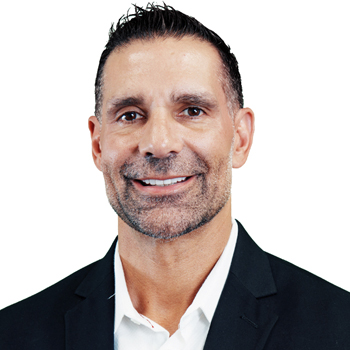Select your time!
My Account
Sleep Therapies

What are Sleep Therapies?
Sleep is an essential component to health and wellness. Without adequate sleep you are at a higher risk for obesity, inflammation, stress disorders and lower mental acuity. Poor sleep is associated with hormone imbalance, tissue inflammation, decreased immune function, and sluggish metabolism.
The health risks associated with sleep disturbances are a result of the negative effect on our energy output, which can have a spiraling effect on the body. Lack of sleep and poor sleep quality that occurs for an extended period of time will impair the adrenal glands (important hormone glands) and mitochondria (power supply of the cells) which are responsible for our hormonal and cellular energy. Disruption of these important processes will quickly result into symptoms of fatigue, infection and disease.
Developing good sleep quality starts with good sleep habits and ruling out any underlying sleep disorders. Many people have symptoms that could be explained by sleep disturbances, but never get properly evaluated with almost 95% sleep disorders going undiagnosed. If you have a sleep disorder, they can be managed or cured with both traditional and natural remedies.
Common Sleep Disorders
The National Commission on Sleep Disorders Research estimates that 40 million Americans suffer from chronic sleep disorders and another 20 to 30 million experience sleep problems intermittently. Besides the umbrella diagnosis of insomnia, sleep apnea is the most common sleep disorder that is diagnosed and treated.
Insomnia involves problems with falling asleep, staying asleep or waking with the feeling of being un-refreshed. There are many contributing factors to insomnia such as: obesity, smoking, medications, alcohol, illicit drugs, caffeine and other medical conditions. Almost 50% of adults will experience acute insomnia or related symptoms at some point. The incidence of insomnia is increasing due to stress, obesity and mental illness.
Sleep Apnea, as with other sleep disorders, can be hard to diagnose. Most people who have sleep apnea don't know they have it because it only occurs while sleeping. Often it is a family member or bed partner to be the first to report signs of sleep apnea. Although there is not a blood test to diagnose sleep disorders, doctors can get enough data to warrant sleep testing after a basic consultation.
The most common type of sleep apnea is obstructive sleep apnea. In this condition, the airway collapses or becomes blocked during sleep. This causes shallow breathing or breathing pauses (apneic spells) that can last from a few seconds to minutes and occur 1-2 times a minute when severe. Typically, normal breathing resumes, sometimes with a loud snort or choking sound.
Sleep apnea usually is a chronic (ongoing) condition. When you have apneic spells, you cannot get sufficient recovery sleep. This can leave you susceptible to numerous health ailments including heart disease, obesity, diabetes, and heart arrhythmias.
Circadian disorders such as jet lag or night shift, have either time-zone changes or occupational induced abnormal sleep patterns. These situations cause constant alternations in sleep cycles that throw of the circadian rhythm resulting in symptoms including difficulty falling asleep, difficulty arising and disrupted sleep. Light therapies, supplements and hormone therapies can help depending on the severity of the symptoms. Ultimately correcting the direct cause of abnormal sleep pattern is the best treatment.
Most common sleep disorders include:
- Insomnia
- Sleep apnea
- Circadian disorders – jet lag / night shift
- Restless legs syndrome
- Narcolepsy
Sleep Hygeine
The National Sleep Foundation reports that fewer than 6 hours of sleep each night is associated with increased risk for obesity, diabetes and additional health problems in numerous clinical studies. However, logging more than 9 hours of sleep per night can also cause issues with your natural sleep cycle. It is important to create a regular sleep cycle with a focus on quality sleep that is created by good sleep hygiene (habits).
Set a regular bedtime and wind down by dimming lights, avoiding alcoholic beverages, turning off the television and avoiding controversial or emotional topics of conversation prior to bed. A bedroom conducive to good sleep is quiet, dark and cool, with a comfortable bed mattress. White-noise machines or fans might help prevent interruptions of sleep. A good tip is that the only things that should occur in the bedroom is sex and sleep.
Keys to good sleep hygiene:
- Avoid taking naps
- Avoid stimulants such as caffeine, nicotine, and alcohol too close to sleep
- Avoid aggressive exercise. Stretching or yoga may help sleep.
- Try not to eat food 1-2 hours prior to bed. Also, try to get most of your water intake at least 2 hours prior to bed
- Ensure adequate exposure to natural light. Light exposure helps maintain a healthy sleep-wake cycle.
- Stay on regular sleep cycle. Sleep is a hormone driven cycle.
- If you have poor sleep avoid reading and watching TV in bed. This can be stimulatory and provoke natural endorphins.
- Make sure that the sleep environment is pleasant and relaxing.
Stages of Sleep
Sleep is divided into two main phases – Non-Rapid Eye Movement (NREM) and Rapid Eye Movement (REM – Dream Sleep) which cycle through the night.
Non-REM has 4 stages- Starts when we begin to fall asleep
- 3/4 of sleep time
- Composed of stages 1-4
- Each stage can last from 5-15 minutes
- Between being awake and falling asleep
- Can be awakened easily during this stage
- Onset of sleep
- Waves of muscle relaxation and muscle tone
- Heart rate begins to slow
- Body temperature decreases
- Deepest stage of sleep with stage 4 the deepest
- Most restful stage of sleep
- Hormones replenish and secrete during this stage
- Blood pressure drops
- Breathing becomes slower
- Muscles are relaxed
- Blood supply to muscles increases
- Tissue growth and repair occurs
- Immune system is restored
- Energy is restored
- This stage decreases with age
-
Accounts for a quarter of our sleep, occurs about 90 minutes after falling asleep and repeats in 90-minute cycles. The first REM stage lasts about 10 minutes and then lengthens as the cycles repeat.
- Children spend about 50% in REM
- Provides energy to brain and body
- Heart and breathing rates can speed up and vary during REM
- Brain activity is heightened
- Dreams occur in REM
- Rapid eye movements
- Body becomes immobile and relaxed, as muscles are turned off
Sleep is an essential component to health and wellness. Without adequate sleep you are at a higher risk for obesity, inflammation, stress disorders and lower mental acuity. Poor sleep is associated with hormone imbalance, tissue inflammation, decreased immune function, and sluggish metabolism.

 US-Licensed Medical Providers & Pharmacies
US-Licensed Medical Providers & Pharmacies
